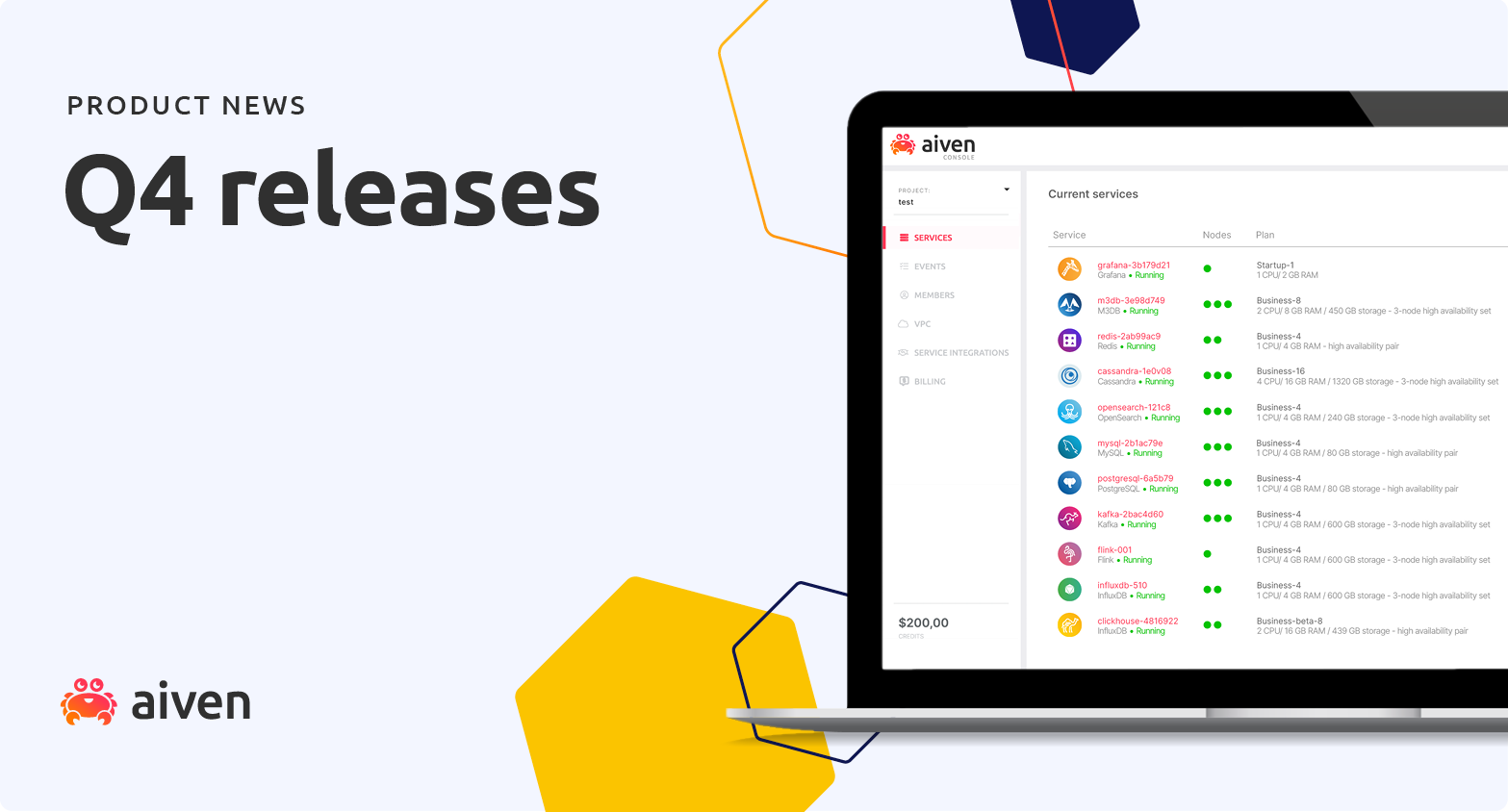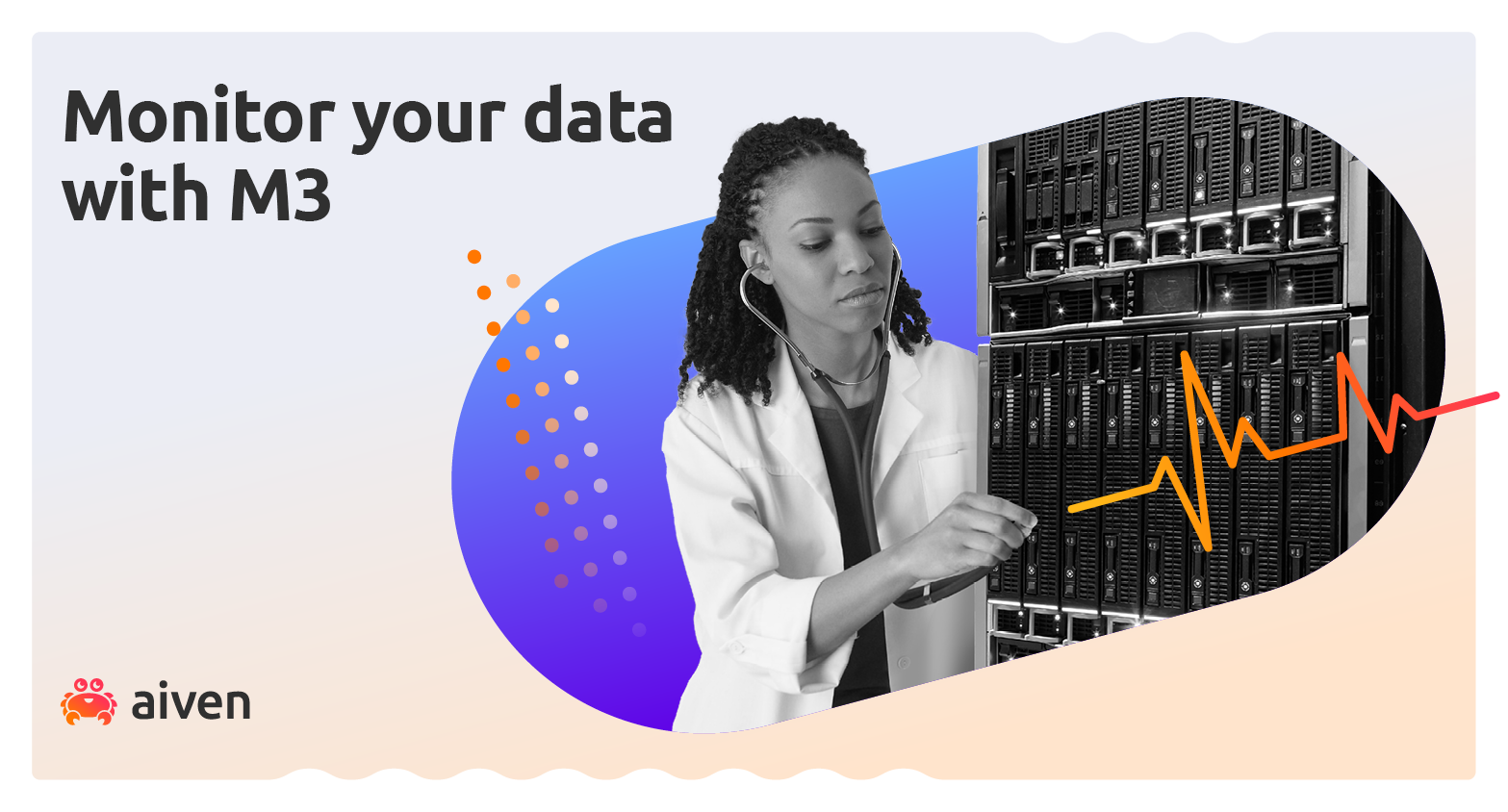Feb 22, 2021
Aiven for M3: The first managed open-source database
The new era of time series has arrived with the first managed open-source database of its kind, Aiven for M3. Find out everything you need to know to be a part of it.

Kyle Buzzell
|RSS FeedHead of Growth Marketing at Aiven
Modern applications and their data needs are evolving at an evermore dizzying pace and part of our job is to ensure that our customers don’t get caught flat-footed. One need that has been increasing, especially over the last two years, is a purpose-built, time series datastore.
This is why our latest services on offer are Aiven for M3 and Aiven for M3 Aggregator.
In this brief post, we’ll perform a quick flyover and discuss the reasoning behind our choices, provide links throughout for you to get more in-depth info and lastly, tell you how to get started!
Time series database: the need
As noted, time series datastores have been exponentially increasing in popularity over the past two years. Their meteoric rise is not only indicative of the use case’s development, but the need for tailored solutions that fit the data type’s characteristics — its volume for instance.
More pragmatically, we needed to address our growing monitoring and observability needs with a robust backbone that could serve us well into the future — and that's M3. As our VP Tech Ops Mika Eloranta put it,
“We selected M3 because it’s truly Open Source, properly implements clustering, and is highly adaptable to various high-throughput, real-world use cases.”
In short, we’re betting that time series data needs will continue to explode and require a truly distributable solution, as our internal needs have.
A TSDB and an aggregator: separating workloads
M3 is pretty cool; in fact, it’s better to think of it as more of a platform as it includes three components: a coordinator, database, and aggregator (learn more about M3’s ins and outs). For those less familiar, aggregation is more or less the gathering and expression of data in summary form and can be especially useful for gaining insights about particular resources.
But here’s the hitch; although M3’s coordinators can handle aggregation by virtue of their role within the architecture, they possess limitations. By offering M3 Aggregator as a separate service, you can independently scale your aggregation workloads and make them highly available.
M3 as a service: try it for yourself
Now that you know why we’ve doubled down on time series data and built the first managed, open-source solution that is truly distributable to handle it, it’s time to try it for yourself! For those of you who are already Aiven customers, simply launch it as you would any other service.
Not an Aiven customer? Try it for free by signing up to our no obligation, 30-day trial where you can launch your first M3 cluster along with our other products in minutes. Still not convinced or just want to learn a little more? Visit our Aiven for M3 and Aiven for M3 Aggregator pages.
We couldn’t close without thanking everyone who’s been involved in its development within the broader community and here at Aiven — this is a prime example of the synergies we’ll continue to create as we promote Open Source with new services and contributions.
In the meantime, stay tuned: follow us on Twitter and LinkedIn and subscribe to our changelog.
Further reading
Want to find out how Aiven uses M3 for monitoring? Read our case study: Open source tools provide observability for Aiven!
Subscribe to the Aiven newsletter
All things open source, plus our product updates and news in a monthly newsletter.
Related resources

Feb 7, 2023
Things are happening at Aiven! Find out what we released in the last quarter of 2022. Warning: there’s a lot of it.

Jun 9, 2022
Check out this post for the program highlights for Uptime 2022 - the conference on open source data technology in the cloud, organized by Aiven.

Aug 12, 2021
Find out how to use M3 to monitor your systems, and Grafana to make the results easier to understand.